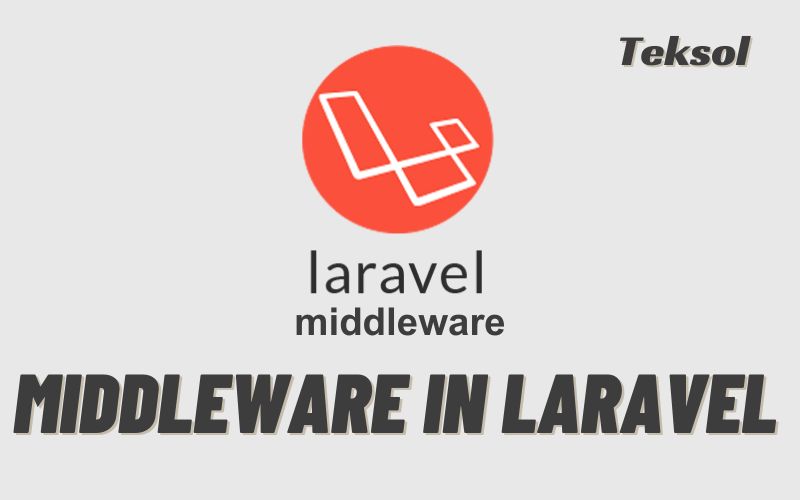Middleware is a way of adding extra code that runs before or after the main code of your application. In this Blog we are going to explain what is middleware in laravel Middleware can do many things, such as:
- Check if the user has permission to view a specific page.
- Changing the way the page looks or works
- Keeping track of what the user does or how the page performs
- Saving or loading data from the internet or the computer
- Checking or changing the data that the user sends or receives
- Stopping or changing the page if something goes wrong
Middleware can be used for all pages, or only for some pages. It can also be changed or customized depending on what you want to do.
How to Create and Use Middleware in Laravel?
To create a new middleware in Laravel, you can use a special command that makes a new file for you. Choose the file name and store it in a folder called Middleware. In the file, you can write the code of your middleware in a function called handle. The function has two things that you can use: the request and the next. The request is the information that the user sends to your application, and the next is the way to continue to the next middleware or the main code of your application.
For example, suppose you want to create a middleware that checks if the user is active or not. If the user is active, you want to let them see the page. If the user is not active, you want to send them a message that says “Your account is inactive”.
You can write your middleware code like this:
- Change the helper function to retrieve the currently logged-in user.
- Then, you check the status of the user. If the status is active, you use the next to continue to the next middleware or the main code. If the status is not active, you use a response function to send a message in JSON format.
To use your middleware in your application, you need to add it to a file called Kernel. Use two lists to manage middleware: one for middleware that applies to all pages and one for middleware that applies to specific pages. To add your middleware to the second list, you can give it a name and a class name. For example, to add your middleware with the name checkStatus, you can write:
Read More From The Teksol: Best AI Assistant For Pc
In the second list, you add a new line with the name and the class name of your middleware.
Now, you can use your middleware with any page or group of pages by using a method called middleware. For example, to use your middleware with a page that shows the home view, you can write:
- Get method is applied to make a page for the home URL.
- Use a function to return the home view.
- Change the middleware method to use the name of your middleware.
Alternatively, to use your middleware with a group of pages, you can write:
- You use the middleware method with the name of your middleware.
- The group method with a function can contains your pages.
You can also use more than one middleware with a page or a group of pages by using an array. For example, to use both the auth and the checkStatus middleware with a page that shows the profile view, you can write:
- The get method is used to make a page for the profile URL.
- You use a function to return the profile view.
- Use the middleware method with an array that contains the names of both middleware.
Conclusion
Middleware is a powerful feature of Laravel that lets you add extra code that runs before or after the main code of your application. You can create your own middleware using a special command that makes a new file for you, and add and use them in a file called Kernel and a file called web. Middleware can help you do many things, such as checking the user, changing the page, logging the data, and more.
Note: Additional Information by The Teksol
According to Wikipedia, middleware can be found in the following places:
- Operating systems: Middleware is often included in operating systems, such as Windows, Linux, and macOS.
- Software development kits (SDKs): Middleware provided as part of SDKs, such as the Java SDK and the Microsoft .NET Framework.
- Third-party software vendors: There are many third-party software vendors that provide middleware solutions.
- Open-source software repositories: There are many open-source middleware projects available on websites such as GitHub and SourceForge.
Here are some specific examples of where to find middleware:
- The Apache Software Foundation: They develops and maintains open-source software. They provide a number of middleware projects, including Apache Kafka, Apache Tomcat, and Apache CXF.
- The Eclipse Foundation: The Eclipse Foundation develops and maintains open-source software. They provide a number of middleware projects, including Eclipse Jetty and Eclipse Virgo.
- The Spring Framework: It provides a number of middleware features, such as dependency injection and transaction management.
- The Microsoft .NET Framework: This is a software framework that provides a number of middleware features, such as Windows Communication Foundation (WCF) and ASP.NET Web API.




One Comment